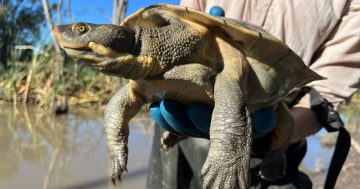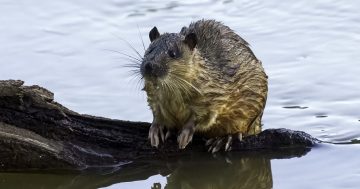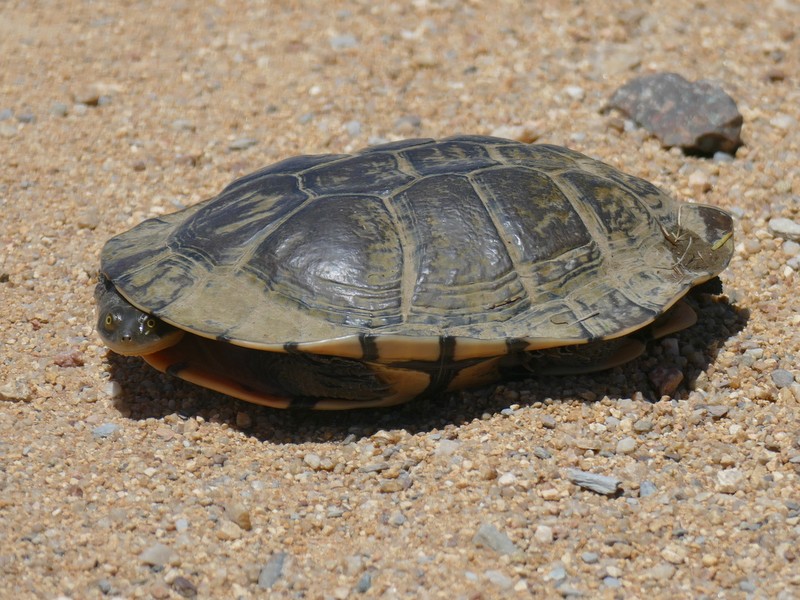
A turtle interrupted while crossing a road, peering at me from within its shell. Like nearly all Australian turtles, it has folded its neck sideways. Photo: Ian Fraser.
Summer can be so many things to so many of us, but one of those things for me is turtle time. Long-necked Turtles are a familiar sight in suburban ponds, farm dams or creeks, especially sunning on logs or rocks in the water where they’re safe from dogs and foxes.
I’ve also moved quite a few from roads – in the direction they were heading, of course – ranging from quiet little gravel byways to the Hume Highway. They spend a surprising amount of time moving between ponds and waterways. Often, this is done soon after rain and on a sunny day so they can use the sun to navigate.
But let’s get one thing out of the way first – are they turtles or tortoises? As usual, when talking about nature, there’s no simple answer.
In Australia, we traditionally used ‘turtle’ for the big ocean travellers and ‘tortoise’ for all the freshwater ones we’re most familiar with.
However, elsewhere in the English-speaking world, ‘tortoise’ refers only to the dryland club-footed species, like the famous island Giant Tortoises and various desert tortoises.
We don’t have those in Australia, fanning the confusion. ‘Turtle’ is used for the rest, both marine and freshwater species, and increasingly, we’re conforming with that in Australia, including in all the field guides, hence my use of ‘turtle’ in this column.
Ultimately, of course, it really doesn’t matter (especially to the animals), but it’s good to know the story.
And whatever we call them, they are almost unimaginably ancient. I shake my head at the use of ‘dinosaur’ to describe someone or something as some sort of loser. On the contrary, they dominated the world for some 160 million years until a mighty meteorite ended their reign.
However, the turtles were around for at least 35 million years before that and are still going strong some 255 million years later!
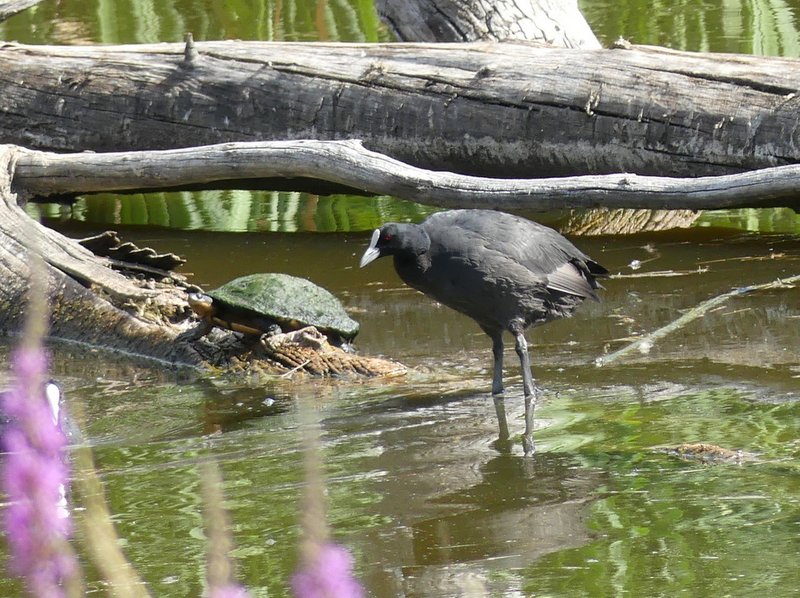
A turtle sunning on a log at Jerrabomberra Wetlands while being inspected by a Coot. Photo: Ian Fraser.
They are characterised by the wonderful protective shell, unique among bony animals, comprising a back plate (the carapace) and a belly plate (the plastron). These are formed primarily from specially flattened and spreading ribs and covered with plates of keratin bequeathed by their far-distant reptile ancestors.
They can fold their legs, head, and neck inside the shell when threatened. It is characteristic of Australian freshwater turtles that they fold their neck in sideways, while most northern hemisphere species draw it straight back in.
The shell isn’t their only defence mechanism, however. If you pick one up to put it somewhere safer than a road, you must hold it at arms-length or be prepared for consequences to your social life!
If threatened, they emit a foul-smelling milky chemical from glands in the groin, presumably to discourage the threatening attacker. It certainly repels me! However, it doesn’t seem to work on foxes here. They either aren’t fooled by it or don’t mind the smell of rotting meat, and there are many sadly empty turtle shells around wetlands, the remains of many fox dinners.
Probably even more significant is the predation of turtle nests.
In early spring, she lays up to 20 rubbery eggs and covers them with soil on the bank of a pond or stream, where they must survive for up to five months before hatching, after which the tiny turtles face a hazardous time until they grow larger.
But it’s been shown that in the absence of active fox control, up to 90 per cent of all Long-necked Turtle nests are destroyed by foxes every year.
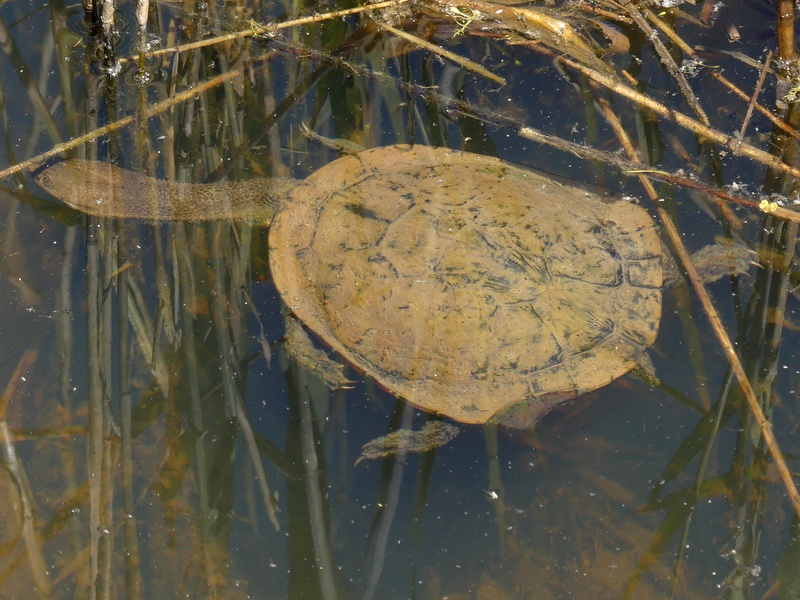
A Turtle underwater at the sanctuary at Tidbinbilla, showing off its long neck, webbed swimming feet and strong claws. Photo: Ian Fraser.
The Eastern Long-necked or Snake-necked Turtle spends winter in torpor in the mud at the bottom of a dam or pond, submerged for months and absorbing oxygen through their skin. When active in the warmer months, they must come to the surface to breathe, but a breath can last for as much as an hour, depending on how active it is.
I admit that ‘active’ is not a word often applied to turtles, but they are quite voracious hunters of anything that they can catch and swallow in the water, including snails, shrimps, tadpoles and small fish. They are also quite happy to snack on any carcase they find in the water.
When they come out of their winter torpor, they must leave the cold, unproductive depths and search for better feeding grounds and mating opportunities.
I hope you can love our turtles as much as I do and can wonder at their age-old story.
Ian Fraser is a Canberra naturalist, conservationist and author. He has written on all aspects of natural history, advised the ACT Government on biodiversity and published multiple guides to the region’s flora and fauna.












